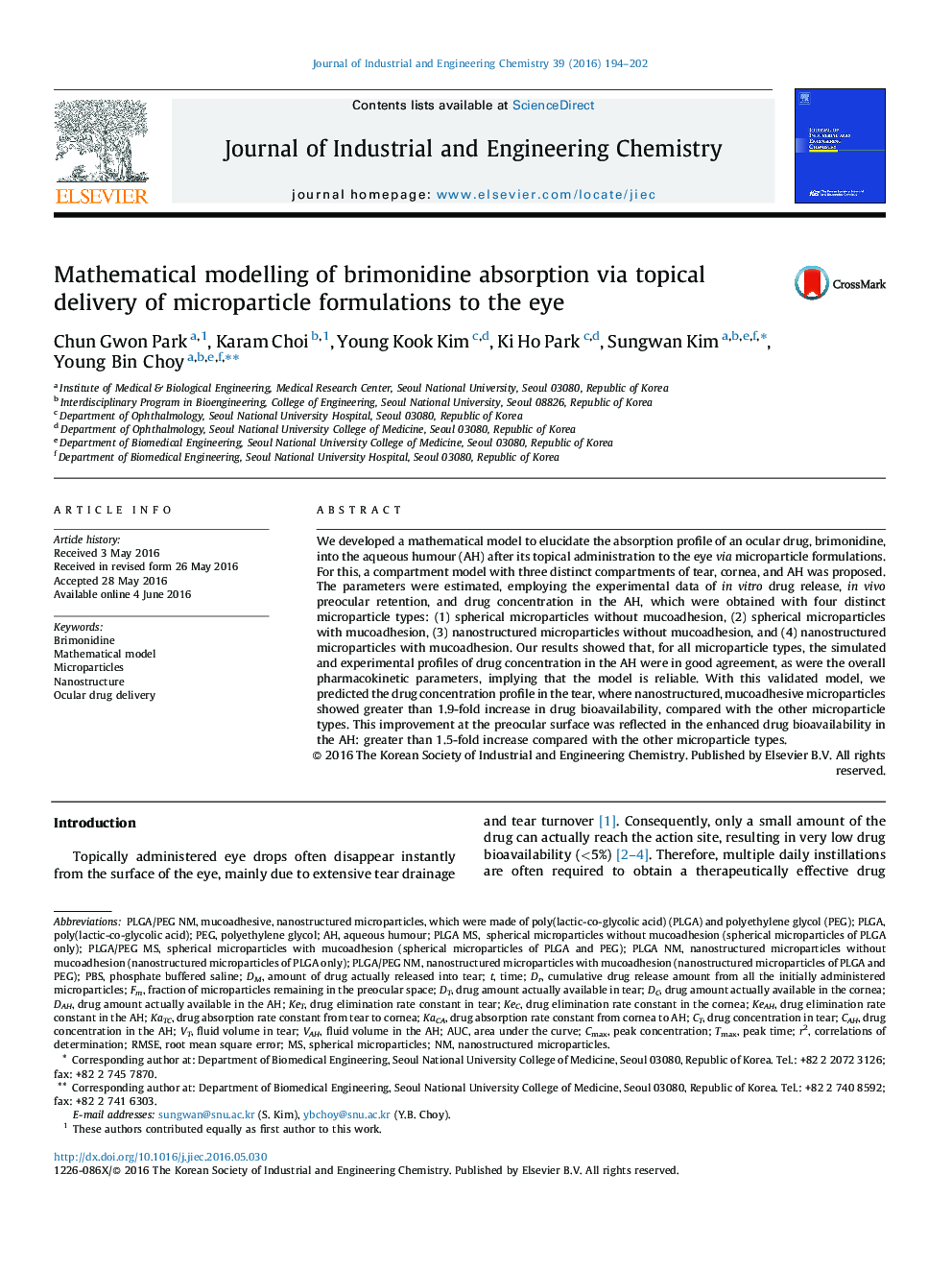| Article ID | Journal | Published Year | Pages | File Type |
|---|---|---|---|---|
| 226720 | Journal of Industrial and Engineering Chemistry | 2016 | 9 Pages |
We developed a mathematical model to elucidate the absorption profile of an ocular drug, brimonidine, into the aqueous humour (AH) after its topical administration to the eye via microparticle formulations. For this, a compartment model with three distinct compartments of tear, cornea, and AH was proposed. The parameters were estimated, employing the experimental data of in vitro drug release, in vivo preocular retention, and drug concentration in the AH, which were obtained with four distinct microparticle types: (1) spherical microparticles without mucoadhesion, (2) spherical microparticles with mucoadhesion, (3) nanostructured microparticles without mucoadhesion, and (4) nanostructured microparticles with mucoadhesion. Our results showed that, for all microparticle types, the simulated and experimental profiles of drug concentration in the AH were in good agreement, as were the overall pharmacokinetic parameters, implying that the model is reliable. With this validated model, we predicted the drug concentration profile in the tear, where nanostructured, mucoadhesive microparticles showed greater than 1.9-fold increase in drug bioavailability, compared with the other microparticle types. This improvement at the preocular surface was reflected in the enhanced drug bioavailability in the AH: greater than 1.5-fold increase compared with the other microparticle types.
Graphical abstractFigure optionsDownload full-size imageDownload as PowerPoint slide
